25.02.2020
45th Weather Squadron now including SpaceX booster recovery conditions in launch forecasts
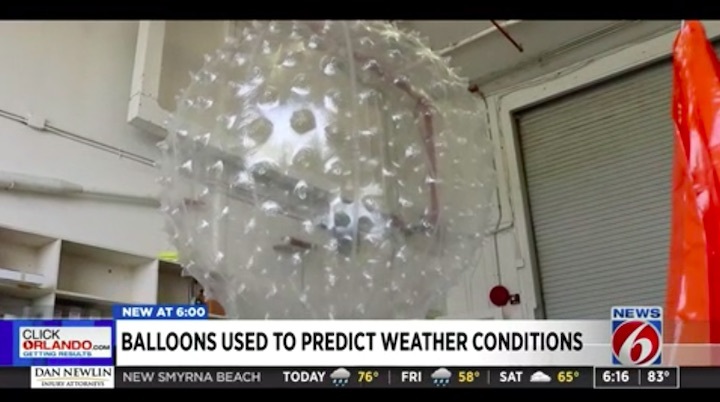
CAPE CANAVERAL AIR FORCE STATION – On any launch day, a team with the U.S. Air Force’s 45th Weather Squadron helps ensure a safe and successful launch – and sometimes landing—using all the technology and tools at their disposal, including weather balloons.
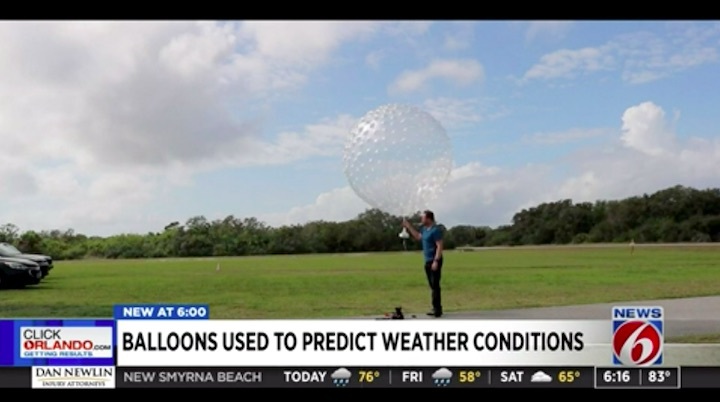
Weather operations at Cape Canaveral Air Force Station deploy the balloons at least twice a day, launch or no launch, to gauge the wind shear and other conditions.
Suzanne Siverling is the supervisor of weather operations at Cape Canaveral Air Force Station. Years ago, she got her start as a New 6 WKMG weather team intern and now she oversees a team that plays an important role in every launch from the Space Coast and weather prediction across the world.
Outside of launch forecasting, the Cape weather station is one of 1,300 sites across the globe that releases a weather balloon 365 days a year, twice a day at the same time.
“That’s what the meteorologists use on TV to tell you how, you know, the temperature, rain everything for the day,” Siverling said, adding the data from the balloons also helps with hurricane forecasting.
When a big storm is approaching, the team at Cape Canaveral releases weather balloons every six hours for the National Hurricane Center adding to figure out where the storm is going.
Traveling at 1,000 feet a minute, the balloons can reach up to 115,000 feet, sending back data with wind speed, direction, temperature and humidity every second of a one-to-two-hour journey using radio signals and GPS.
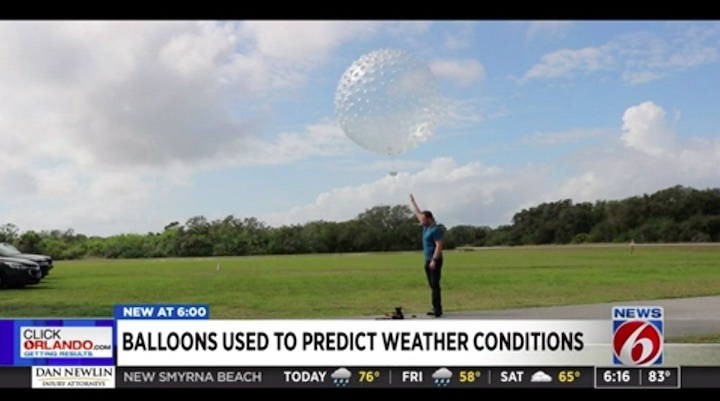
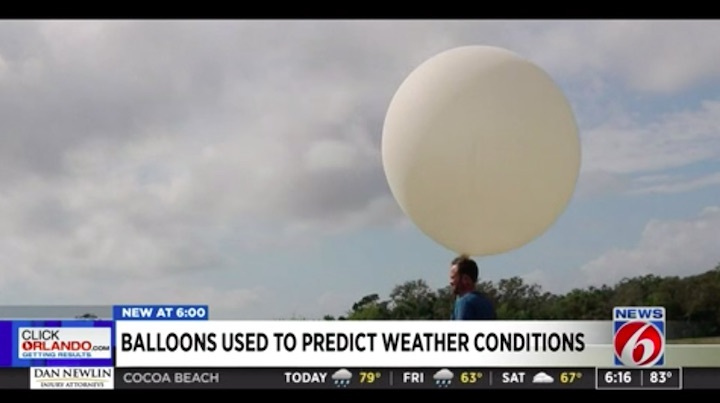
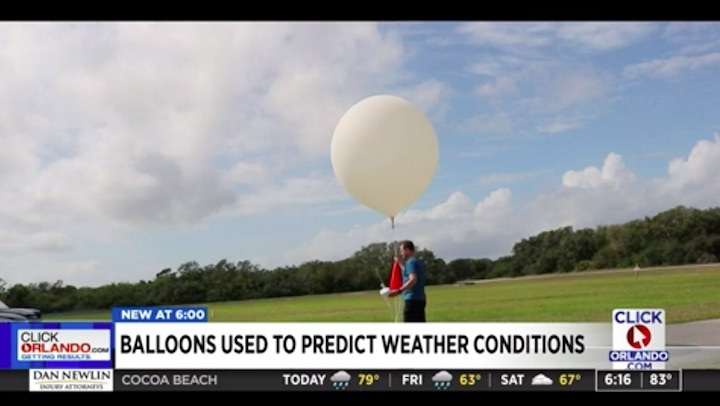
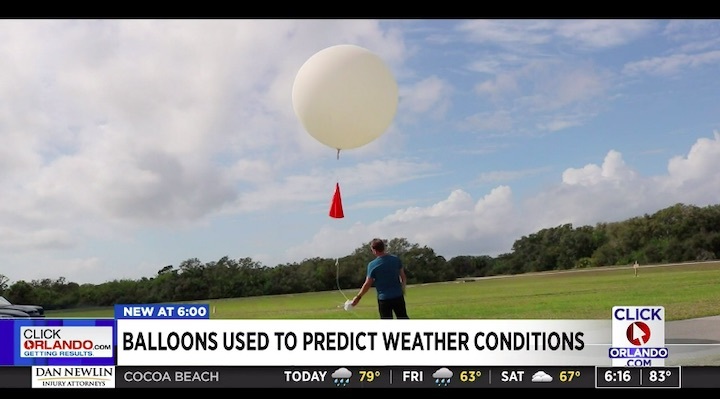
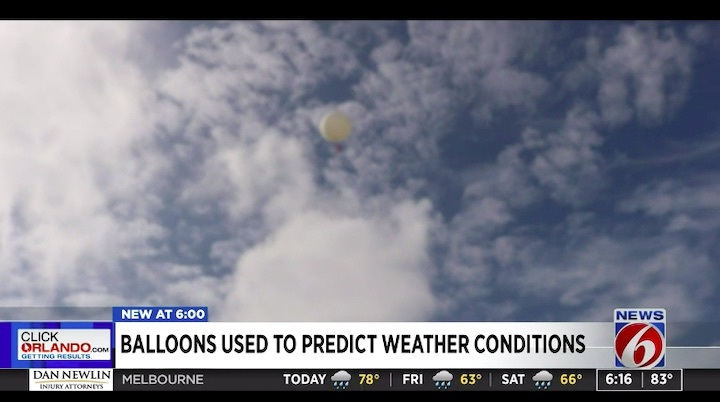
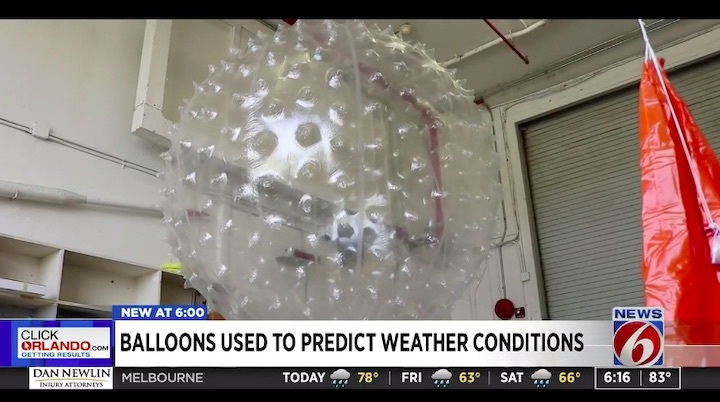
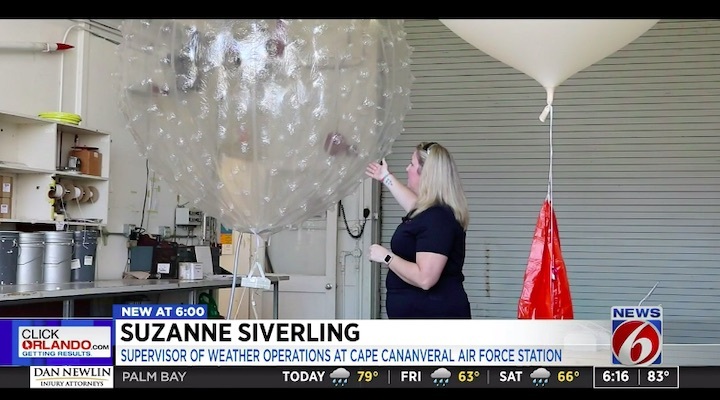
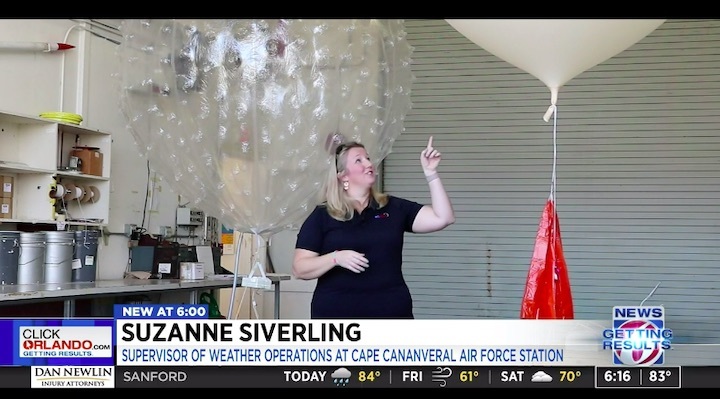
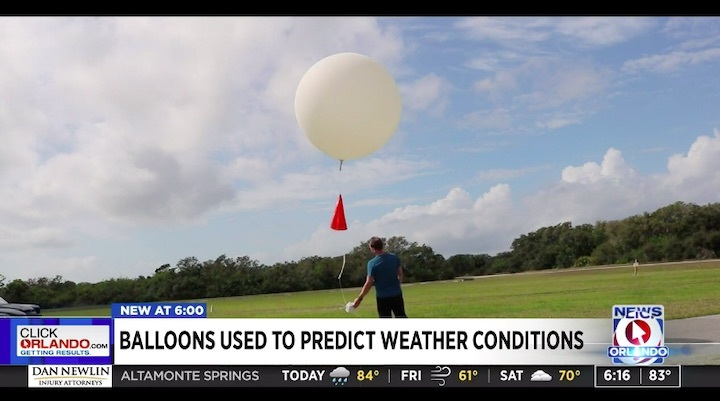
Standing in the high-bay garage of the weather balloon facility on Thursday, Siverling explained how her team uses giant weather balloons to help NASA and companies including SpaceX, United Launch Alliance and Boeing determine what conditions their rocket or spacecraft will face ahead of a blastoff— or a booster landing.
Data collected from the weather balloons determines wind speeds and direction at the same height where a rocket would be more susceptible to a catastrophic failure, Siverling said. When the weather balloon team gets the data, they send it off to the 45th Weather Squadron and company launching or landing.
“Then they make the call for ‘Go’ or no go based on their upper-level wind constraints,” Siverling said.
On launch day, Siverling and her team release balloons every 20 minutes in the four-hour countdown.
There are 10 NASA criteria weather officers are looking at ahead of launch. Basically, the bible of launch weather criteria, explained Spacelift weather operations flight commander Capt. Jason Fontenot.
“On day of launch, we actually utilize that balloon data to get specific temperature levels to evaluate certain lightning, launch commit criteria,” Fontenot said. “These are very important for determining if some of these rules are being violated due to our lot of rules that we have in place.”
Each launch company also has its own set of weather constraints for different rockets.
“Every customer has a very unique set of requirements. And we are learning very, very quickly that we have to determine where our boundaries are because we are being asked by so many of these different launch providers about certain requirements that we may or may not be able to support,” Fontenot said. “That’s the biggest challenge right now we’re coming across is where are our boundaries for this weather support.”
The 45th Weather Squadron adding more launch weather officers to support the increasing number of launch providers and liftoffs.
As more companies begin launching and landing at Kennedy Space Center and from Cape Canaveral Air Force Station, the number of weather balloon launches will also expand.
“As more customers come on, they’re calling on the use of other balloons for their upper-level winds analysis for day of (launch),” Siverling said.
Launch forecasting is also changing to accommodate the evolving space industry.
Weather officers are now forecasting recovery or landing conditions, too. SpaceX more often than not lands its Falcon boosters on a ship called Of Course I Still Love You in the Atlantic Ocean after liftoff.
For every launch, the 45th Weather Squadron puts out a forecast that indicates the likelihood of weather causing a delay due to a violation of those criteria, also known as the probability of violating, or PoV. With the last SpaceX launch, the forecast included some new factors such as recovery conditions, solar weather and upper-level wind shear.
“SpaceX's business model is reuse,” Launch Weather Officer Mike McAleenan said. “So they really want these boosters back. That's part of their, their normal launch campaign is to bring the boosters back.”
McAleenan said winds and wave height could impact a rocket booster landing if the drone ship can’t maintain its position.
Later this year, SpaceX will begin launching humans to the International Space Station on the Crew Dragon spacecraft. Weather officers will forecast recovery conditions for when the astronauts return in the capsule splashing down in the Atlantic Ocean after their mission or if there is a launch abort landing the spacecraft at sea.
That means on launch day not only will SpaceX be considering liftoff conditions but landing conditions, too, and that may increase the chances for weather-related scrubs.
During Crew Dragon launches, the 45th Weather Squadron will forecast conditions for an Atlantic Ocean abort landing indicating how safe it is for rescue crews to be in the Atlantic should a recovery be needed.
Quelle: NEWS6
